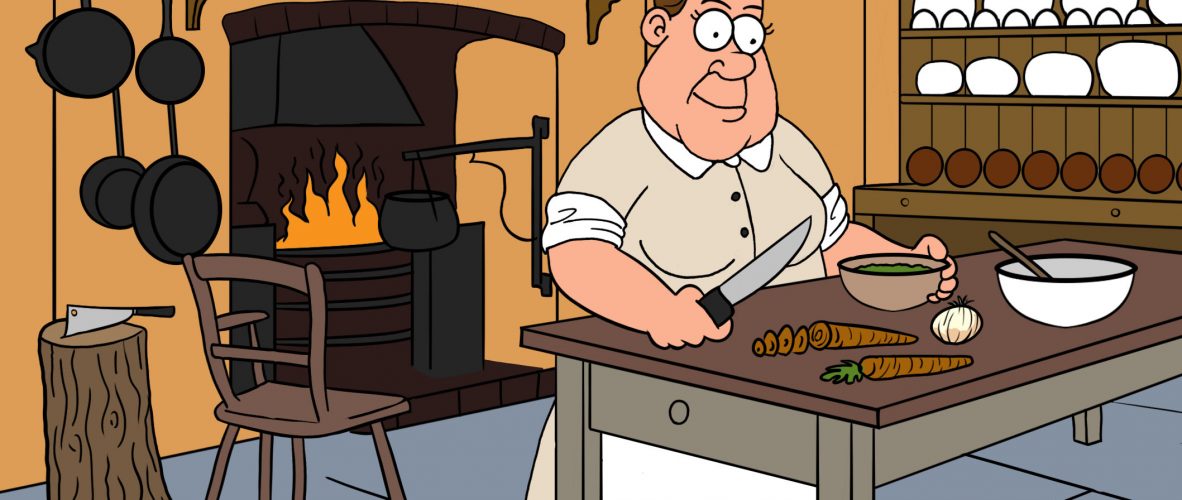The name given to the tight trousers worn by some Regency gentlemen, such as the notorious Beau Brummell and his ‘dandy’ followers, as they showed off their leg muscles.
Salamongundy
Take two or three roman or cabbage lettice, and when you have washed them clean, swing the pretty dry in a cloth; the beginning at the open end, cut the cross-ways, as fine as a good big thread, and lay the lettices so cut, about an inch thick, all over the bottom of a dish; when you have thus garnished your dish, take a couple of cold roasted pullets, or chickens, and cut the flesh off the breasts and wings into slices, about three inches long, a quarter of an inch broad, and as thin as a shilling; lay them upon the lettice round the end to the middle of the dish, and the other towards the brim; then having boned and cut six anchovies, each into eight pieces, lay them all between each slice of the fowls, then cut the lean meat off the legs into dice and cut a lemon into small dice; then mince the yolk of four eggs, three or four anchovies, and a little parseley, and make a round heap of these in your dish, piling it up in the form of a sugar loaf, and garnish it with onions, as big as the yolks of eggs, boiled in a good deal of water very tender and white. Put the larges of the onions in the middle on the top of the salamongundy, and lay the rest all round the rim of the dish, as thick as you can lay them; then beat some sallat-oil up with vinegar, salt and pepper, and pour over it all. Garnish with grapes just scalded, or French beans blanched, or Station flowers, and serve it up for a first course.
Hannah Glasse
